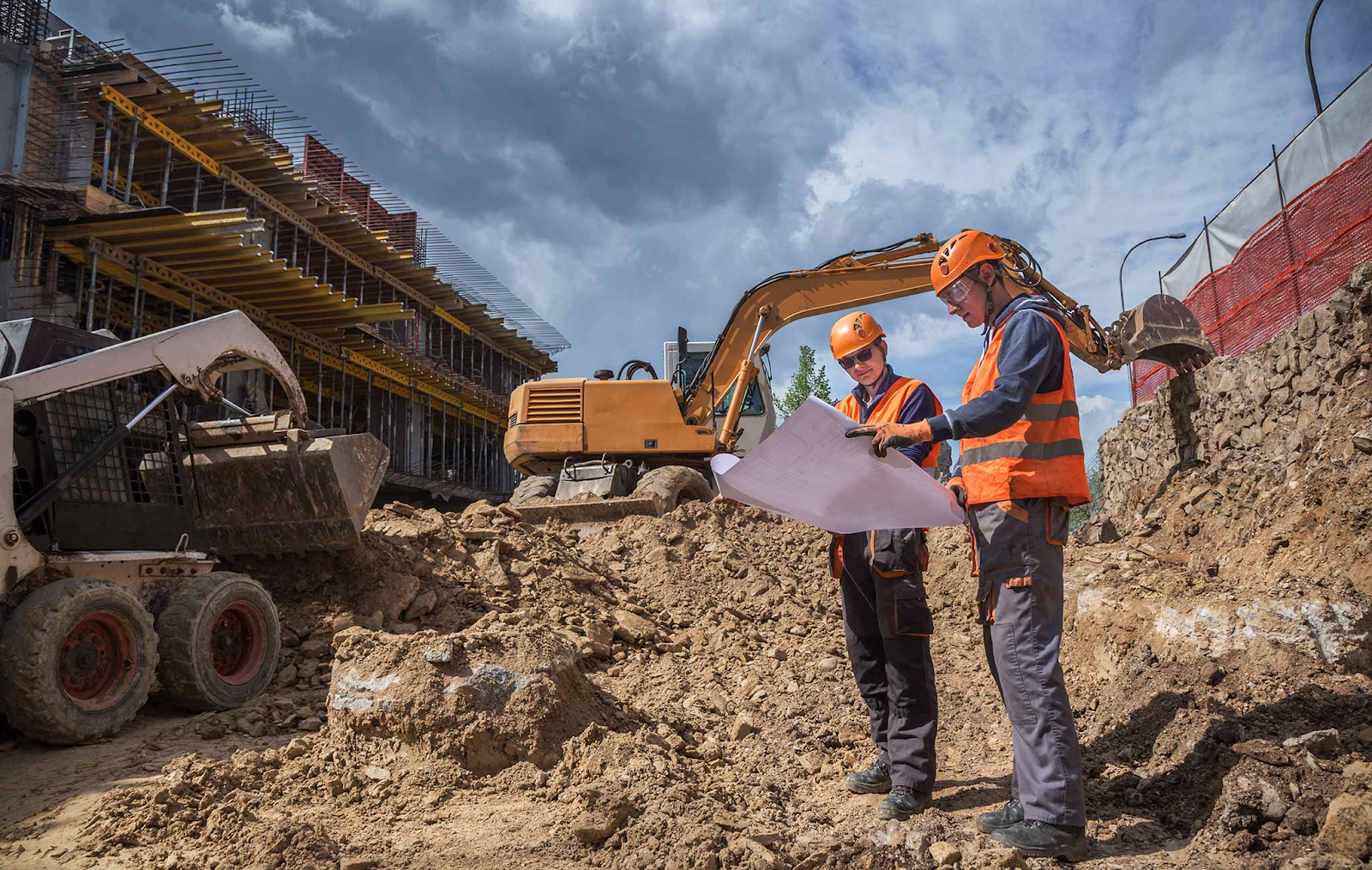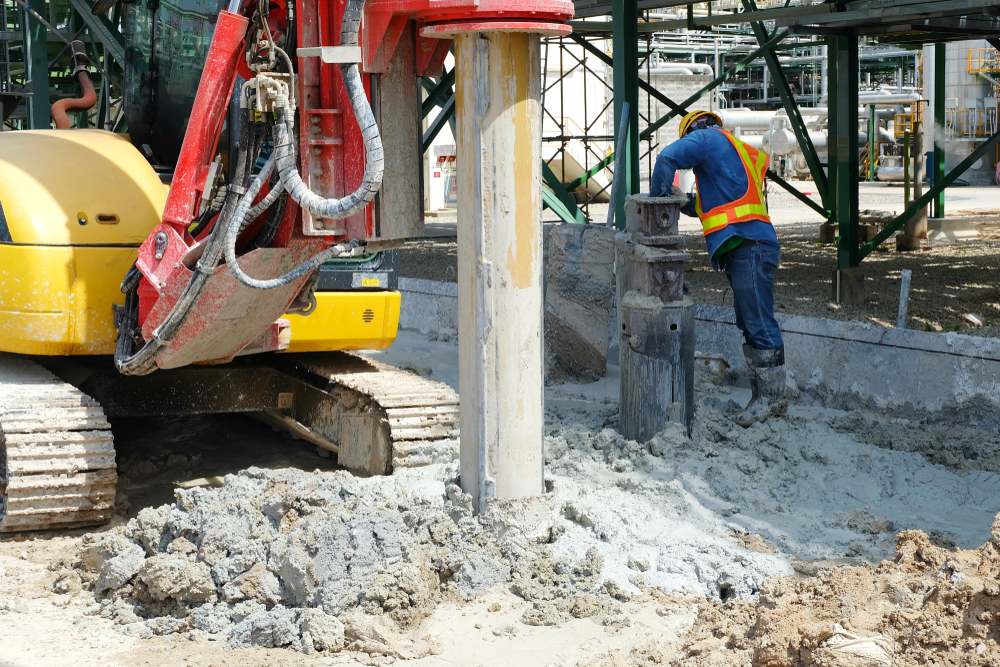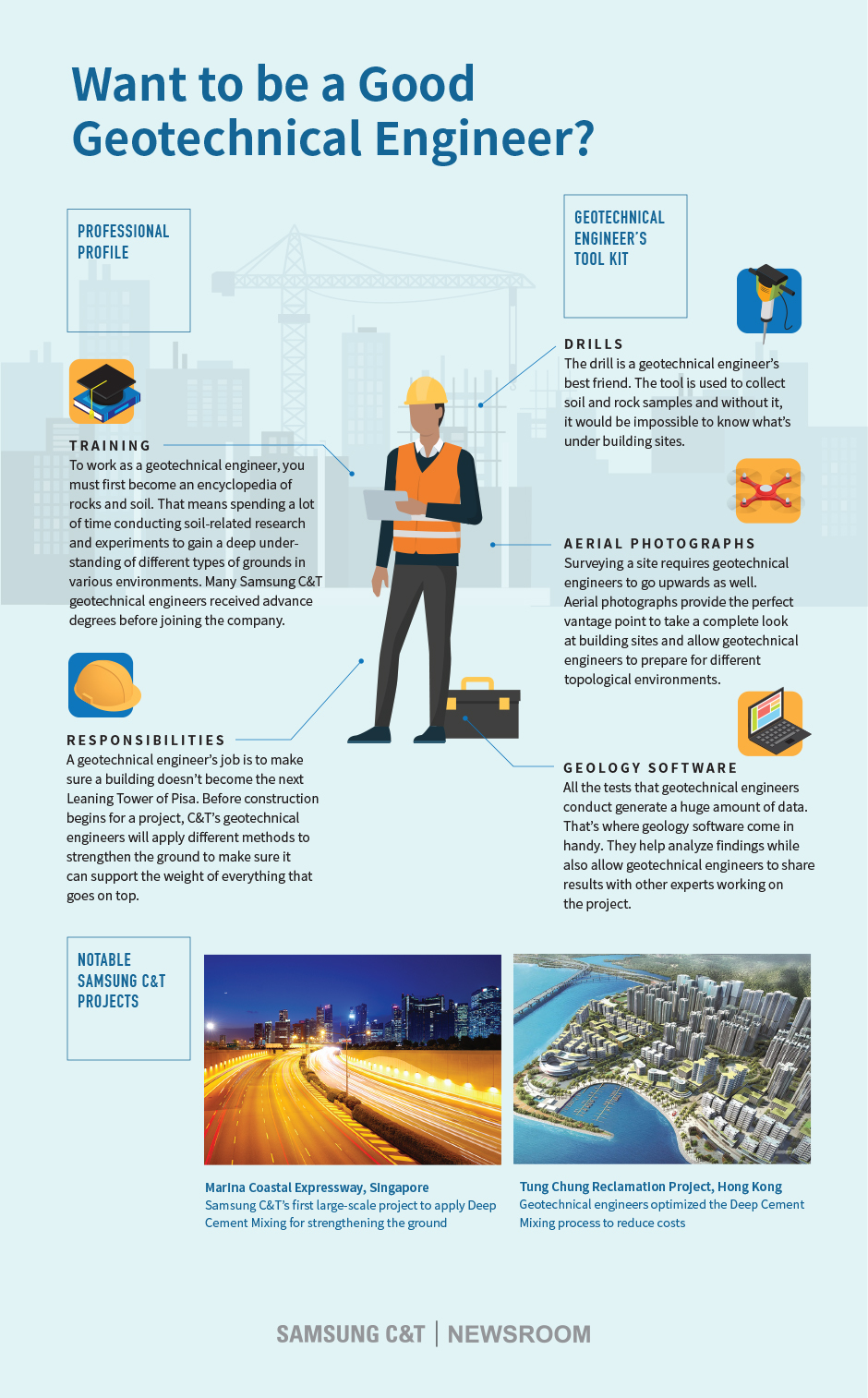The Facts About Geotechnical Engineering For Construction Projects Revealed
The Facts About Geotechnical Engineering For Construction Projects Revealed
Blog Article
Some Of Geotechnical Engineering For Construction Projects
Table of ContentsThe 4-Minute Rule for Geotechnical Engineering For Construction ProjectsTop Guidelines Of Geotechnical Engineering For Construction ProjectsNot known Incorrect Statements About Geotechnical Engineering For Construction Projects Our Geotechnical Engineering For Construction Projects StatementsGeotechnical Engineering For Construction Projects Can Be Fun For AnyoneFacts About Geotechnical Engineering For Construction Projects UncoveredNot known Facts About Geotechnical Engineering For Construction Projects
and Kovacs, W. (1981 ), An Intro to Geotechnical Design, Prentice-Hall, Inc. Deep Scan Tech (2023 ): Deep Check Technology uncovers concealed structures at the site of Denmark's tallest structure. "Geofrost Coring". GEOFROST. Retrieved 20 November 2020. Han, Jie (2015 ). Concepts and Technique of Ground Enhancement. Wiley. ISBN 9781118421307. RAJU, V. R.Ground Enhancement Technologies and Instance Histories. Singapore: Study Publishing Services. p. 809. ISBN978-981-08-3124-0. Ground Enhancement Principles And Applications In Asia. Pariseau, William G. (2011 ). Style evaluation in rock technicians. CRC Press. Hegde, A.M. and Palsule P (Geotechnical Engineering for Construction Projects).S. (2020 ), Efficiency of Geosynthetics Reinforced Subgrade Subjected to Repeated Automobile Plenties: Speculative and Mathematical Researches.
Cengage Knowing, Stamford, 666 p. Atkinson, J., 2007. The mechanics of soils and foundations. The Observational Method in ground engineering concepts and applications.
How Geotechnical Engineering For Construction Projects can Save You Time, Stress, and Money.
Laboratory and area testing plays an essential function in this procedure. By extracting examples from the earth's subsurface and applying a suite of examinations, geotechnical designers can predict the practices of soil layers and evaluate their viability for numerous building efforts. The significance of geotechnical engineering in civil engineering can not be overemphasized, attributable to several aspects: The first action in any type of geotechnical research involves determining the dirt kind at the construction website.
Comprehending these characteristics makes sure that just ideal soil types are chosen for the advancement, thereby averting prospective architectural failures. The foundation serves as the bedrock of any kind of construction project. Choosing the proper foundation kind is a choice that depends upon the comprehensive analysis provided by geotechnical engineering. This guarantees the durability and stability of frameworks by accommodating the loads they will bear.

Geotechnical website examination is a crucial action in the preparation and implementation of any kind of building and construction job. It includes the collection and analysis of information associated with the physical homes of soil and rock below a recommended building and construction website. This details is vital for the layout and building and construction of risk-free, stable, and sustainable frameworks.
Fascination About Geotechnical Engineering For Construction Projects
In this blog, we will certainly look into the value of geotechnical website investigation, its various elements, and how it profits building tasks. Geotechnical site examination, also called subsurface exploration, includes a collection of activities intended at identifying the dirt, rock, and groundwater problems at a construction site. The key objectives are to determine potential geotechnical dangers, assess the engineering buildings of subsurface products, and supply referrals for the design and building of structures, preserving wall surfaces, and various other frameworks.
This may consist of geological maps, aerial photographs, previous investigation reports, and historical information. The desk research study aids in recognizing possible geotechnical concerns and preparing the succeeding fieldwork. Complying with the desk research study, a website reconnaissance is performed to aesthetically inspect the website and its environments. This includes observing the topography, drain patterns, existing structures, greenery, and any indicators of instability or disintegration.
An Unbiased View of Geotechnical Engineering For Construction Projects
Shallow examination pits are dug deep into to directly observe and example the dirt and rock. This approach serves for studying the top layers of the subsurface and identifying near-surface dangers. Non-invasive geophysical approaches, such as seismic refraction, ground-penetrating radar (GPR), and electrical resistivity tomography (ERT), are made use of to map subsurface conditions and find abnormalities.
Soil and rock examples collected during the area examination go through research laboratory testing to establish their physical and mechanical residential or commercial properties. Common lab examinations include grain size analysis, Atterberg limitations, compaction examinations, triaxial shear tests, and loan consolidation tests. These tests supply essential data for geotechnical evaluation and layout. The information collected from the workdesk research, site reconnaissance, field investigation, and laboratory testing are examined and analyzed to develop a detailed understanding of the subsurface problems.
The main advantage of geotechnical website examination is making certain the safety and security and stability of structures. By understanding the subsurface conditions, engineers can make structures and various other architectural elements that can endure the tons and environmental forces they will certainly undergo. This decreases the threat of negotiation, subsidence, and structural failure.
Not known Factual Statements About Geotechnical Engineering For Construction Projects
This makes certain reliable and secure construction techniques. Geotechnical site investigations are commonly needed by building codes and laws.
This information is invaluable for project supervisors, engineers, and professionals in creating realistic schedules, budget plans, and contingency strategies. Geotechnical Engineering for Construction Projects. Skyscraper Building in a Coastal AreaIn a coastal city, a high-rise household building was intended on a site with suspected loosened sand down payments and a high water table. A comprehensive geotechnical examination, consisting of borehole exploration, CPT, and geophysical surveys, was performed
The Ultimate Guide To Geotechnical Engineering For Construction Projects
Based upon these searchings for, the foundation design was modified to consist of deep heap foundations prolonging into stable strata, and ground renovation strategies, such as vibro-compaction, were carried out to reduce liquefaction risks. This proactive approach ensured the security and stability of the structure while staying clear of expensive post-construction remediation. browse this site Facilities Advancement on a Sloping TerrainA significant facilities project, entailing the building of a highway and bridges, was intended on an uneven terrain with high slopes.

The Leaning Tower of Pisa (Italy), a legendary architectural marvel, is well known for its unexpected tilt from significant geotechnical concerns. The tower's foundation was improperly developed to take care of the soft, unsteady dirt underneath it, leading to irregular settlement and its distinct lean. Our globe is dotted with impressive infrastructure projectsfrom looming skyscrapers to sprawling bridgesall standing testament to the evolution of the various construction tools and methods offered.
Geotechnical design is a specialized area within civil design that focuses on researching the habits of planet materials. This branch dives deep into the groundinvestigating exactly how the soil, rock, and groundwater at a construction site can influenceand be affected bythe infrastructure that we erect on and right into them. Prior to click now a solitary brick is laid or a concrete foundation put, geotechnical designers probe right into the earthgathering important information regarding the website's dirt make-up, rock structure, and groundwater levels.
8 Easy Facts About Geotechnical Engineering For Construction Projects Described

is a tool utilized to examine the honesty and load-bearing ability of piles during installment, leveraging the principle of wave breeding. It enhances construction effectiveness by supplying real-time analyses, therefore ensuring risk-free and efficient stack foundations. Among the practical applications of geotechnical design entails determining and executing the ideal techniques for foundation building and construction.
Load driving stands for even more than the mere act of inserting structural elements right into the ground. On the other hand, it is a carefully coordinated procedure of moving a structure's load past the much less steady soil layers closer to the surfacedown to the more substantial strata that lie below. In the case of pile driving, take into consideration exactly how geotechnical engineers adeptly utilize this method to evenly disperse the framework's weight.
Report this page